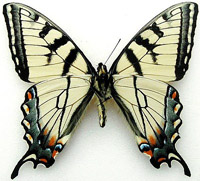Lepidoptera Survey
Date of this Version
6-5-2001
Document Type
Article
Citation
Taxonomic Report of the International Lepidoptera Survey (June 5, 2001) 3(2): 1-7
Also available at https://lepsurvey.carolinanature.com/ttr/ttr-3-2.pdf
Abstract
Satyrium edwardsii meridionale is described as a new subspecies from Aiken County, South Carolina, United States. This scarce colony is the southeasternmost known population of this butterfly in the United States. It was discovered by the author (Ronald R. Gatrelle) in 1990 near Aiken State Park in Aiken County, South Carolina. This site is in South Carolina’s upper Coastal Plain in the southern part of the state adjacent to Georgia. It is known from only one male and one female at the type locality. Because it was known from only one pair, the author thought it best to wait until more specimens became available before describing this as a new subspecies. In 2000 the author located a series of several very similar edwardsii from Cobb County, Georgia in the FSCA collection Gainesville, Florida. Also, in recent years populations of S. edwardsii have been discovered in the southern Sandhills (upper Coastal Plain) of North Carolina that may well prove to belong to this subspecies as well. This was seen as sufficient evidence to confirm the southernmost populations as a phenotypically distinct subspecies paralleling the normal subspecific pattern of all other eastern United States Satyrium of northern and southern clinal subspecies. Compared to the nominate subspecies, meridionale is much larger, has bolder marking on the ventral hindwing margins, much longer tails and the spots of the postmedian band tend to be less round. It is sympatric with S. calanus nr. falacer, S. liparops liparops, S. titus mopsus, and two other undetermined and/or undescribed Satyrium species or subspecies at the type locality. The holotype is currently deposited in the Museum of the Hemispheres (MOTH) collection, Goose Creek, South Carolina, USA.


Comments
Copyright 2001, International Lepidoptera Survey. Open access material
License: Creative Commons Attribution-ShareAlike-NonCommercial 4.0 International (CC BY-SA-NC 4.0 International)